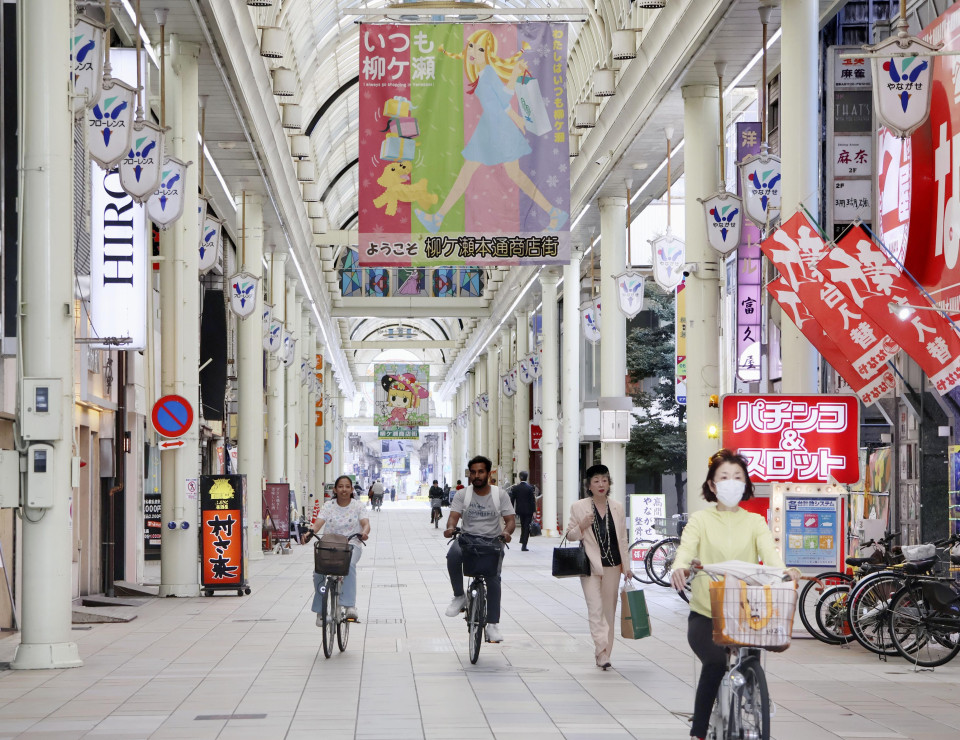Tokyo, 13 June, /AJMEDIA/
A once-bustling shopping district in the city of Gifu which boasts a 135-year history and inspired a hit song that defined its heyday will see the withdrawal of department store mega-chain Takashimaya Co at the end of July.
Takashimaya’s departure from the Yanagase shopping arcade is a portent of a more worrying trend sweeping the country, as commercial districts that have coexisted with major department stores lose customers amid Japan’s declining birthrate and aging population.
Despite the setback, individual store owners in the Yanagase arcade are determined to turn their fortunes around by using social media to remind people of the area’s historical charm while changing their offerings to attract a younger, more vibrant clientele.
“I’ve always come to Yanagase because Takashimaya was here. If the store closes, it will be gloomy all around,” part-time building cleaner Akira Hayashi, 77, said on one weekday afternoon in May while standing in the sparsely populated street of shuttered storefronts.
Hayashi fondly recalls his days of drinking at thriving local taverns along the shopping street as a young man.
Located about a 15-minute walk from JR Gifu Station, Yanagase began developing as a commercial and entertainment district toward the end of the 19th century and flourished in the 1950s through the 1970s after recovering from wartime devastation.
Driven by singer Kenichi Mikawa’s 1966 million-seller ballad “Yanagase Blues,” the district achieved nationwide fame and was so lively at times that people would often be shoulder to shoulder while walking along the boulevard.
More than 1,000 stores lined the street at its peak as Yanagase boomed as a central hub for the city’s 350,000 to 400,000 inhabitants at that time.
In 1977, the Takashimaya Gifu store opened, but over time it waned due to the opening of large shopping malls in the suburbs in conjunction with the shift to a more car-oriented society and the collapse of the asset-inflated bubble economy.
With the upcoming closure, which the store announced in October last year, Gifu will follow Yamagata, Tokushima and Shimane to become the fourth of Japan’s 47 prefectures to have no department store.
In Japan, there are approximately 12,000 traditional-style “shotengai” shopping districts, which are typically pedestrian streets or malls lined with many retail shops.
According to a 2021 survey by the central government’s Small and Medium Enterprise Agency, some 40 percent of the shopping districts have a vacancy rate of 10 percent or more. The shopping malls are considered “in disuse” when the vacancy rate exceeds that level.
“Yanagase will not have anything to rely on anymore,” said Takuro Mizuno, who runs a tailor-made suits shop and in April became president of the Yanagase shopping center promotion association.
But the 35-year-old quickly added, “This will finally put a fire in the belly of the individual shop owners. Our district will definitely make a comeback.”
In May, an official Yanagase account was opened on X, the social media site formerly known as Twitter. In addition to promoting events and details about eateries and shops, it also looks to draw in shoppers by highlighting an anime in which the shopping district appears. The account also includes updates on Mizuno’s official activities.
Within two weeks of its launch, the number of followers had approached 1,000.
Each store in the arcade is also putting in work to bring in new customers. Seizaburo Iwata, 47, is the third-generation president of Iwata Watch & Jewelry, a shop that was founded in Nagoya in 1937 and moved to Yanagase after World War II.
In addition to traditional high-end jewelry, affordable wedding rings for young customers are also displayed in the showcases. The entrance’s signboard, which had been in place for 60 years, will be replaced to create a fresh look.
“We are aiming to become a time-honored business where young people also feel comfortable casually dropping in,” Iwata said.
Mizuno sees the withdrawal of Takashimaya as an opportunity for each store to reassess its services.
He believes that today’s increasingly efficient consumer-driven society conversely makes the traditional relaxed atmosphere of the Yanagase shopping district all the more appealing. He shared his vision looking ahead to the district’s 150th anniversary, officially slated for 2039.
“This place is not as refined as a large shopping center and has many imperfections. I hope to make use of such human frailties so that people will again say that Yanagase is the best shopping district in Japan,” Mizuno said.









































